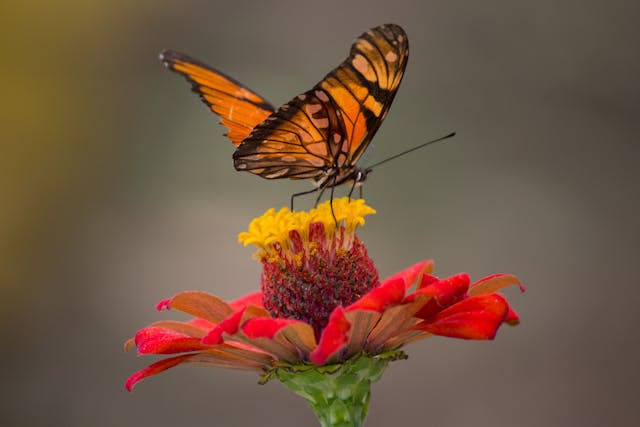In the gentle embrace of nature’s tapestry, there exists a world where vibrant hues and delicate textures come together to create a symphony for the senses. This world is rich with plants that are not only breathtakingly beautiful but also vital to the health of our ecosystems. These plants, often celebrated for their role in supporting pollinators, have a story that intertwines aesthetics, ecological importance, and a deep connection to human well-being.
Imagine a garden where every bloom is a beckoning call to bees, butterflies, and hummingbirds. This is the essence of a pollinator-friendly garden, a sanctuary that thrives on the mutualistic relationship between flora and fauna. Among these plants, some stand out not only for their ecological contributions but also for their visual and tactile appeal. Flowers like lavender, echinacea, and milkweed are more than just pretty faces; they are lifelines for pollinators.
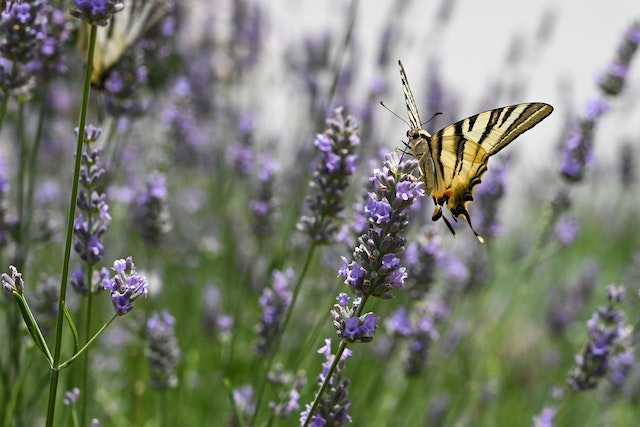
Lavender, with its slender stalks adorned with clusters of purple-blue flowers, is a quintessential plant for pollinators. The scent of lavender is both calming and invigorating, a paradox that has enchanted humans for centuries. Historically, lavender has been used in perfumes, medicines, and even in culinary dishes. Native to the Mediterranean, it flourishes in sunny, well-drained soils. Its beauty lies not only in its color and fragrance but also in its soft, velvety leaves that invite touch, making it a sensory delight. Lavender promotes relaxation and has been shown to reduce anxiety, making it a muse for artists and a balm for the soul.
Echinacea, commonly known as coneflower, is another gem in the pollinator garden. Its bright, daisy-like flowers with a prominent central cone are a magnet for bees and butterflies. Indigenous to North America, echinacea has a rich history among Native American tribes who used it for its medicinal properties. The petals, which range from pink to purple, droop gracefully around the cone, creating a dynamic visual effect that captures the eye. The tactile experience of echinacea is one of sturdiness and resilience, reflecting its ability to thrive in various conditions. Echinacea is also known for its immune-boosting properties, symbolizing the strength and vitality that nature can impart to us.
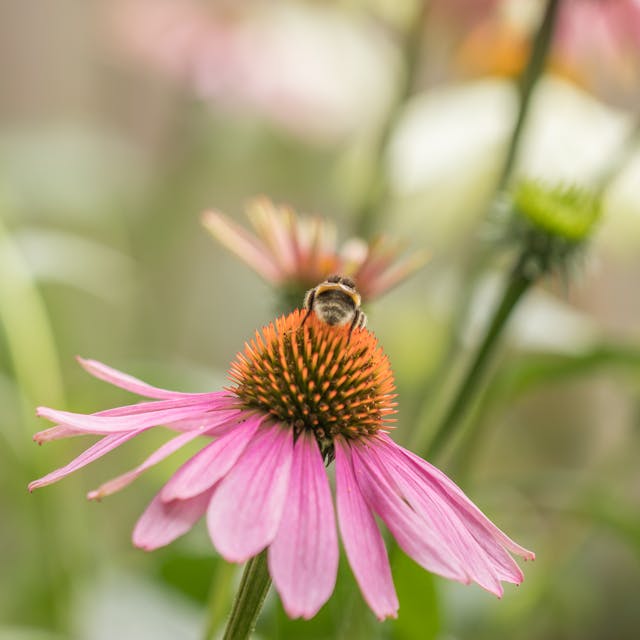
Milkweed, the primary host plant for the monarch butterfly, is both a lifeline and a spectacle. Its clusters of small, star-shaped flowers range in color from white to vibrant orange and pink. The history of milkweed is deeply intertwined with the life cycle of the monarch butterfly, a symbol of transformation and endurance. Native to North America, milkweed’s milky sap was once used by Native Americans for its medicinal qualities. The leaves of milkweed are thick and slightly rough, a texture that speaks to its rugged nature. This plant promotes biodiversity and supports the life cycle of one of nature’s most captivating insects. The presence of milkweed in a garden can transform it into a living canvas of fluttering wings and vibrant blooms.
The beauty of these plants is not merely skin deep. Their aesthetic appeal is complemented by their ecological importance. By attracting pollinators, these plants facilitate the reproduction of countless other species, ensuring the health and diversity of our ecosystems. This, in turn, supports the food chains that sustain life on Earth. The interplay of colors and textures in a pollinator garden is a reminder of the interconnectedness of all living things, a theme that has inspired poets, painters, and musicians throughout history.
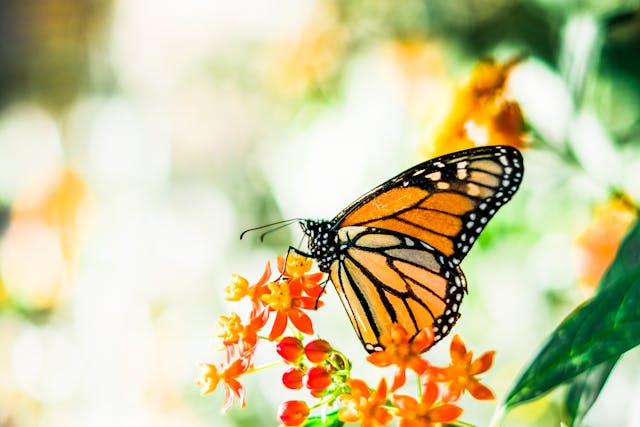
Pollinator-friendly plants also have a profound impact on our mental health. The act of gardening, of nurturing these plants and watching them grow, can be deeply therapeutic. It provides a sense of purpose and accomplishment, a break from the stresses of modern life. The vibrant colors and soothing scents of these plants have been shown to reduce stress and anxiety, promote relaxation, and even improve cognitive function. Being in the presence of nature, surrounded by the gentle hum of bees and the fluttering of butterflies, can ground us and bring a sense of peace and connection to the world around us.
Moreover, these plants can inspire creativity. Their beauty and resilience can serve as a muse for writers, artists, and musicians. The delicate interplay of light and shadow on a lavender field, the vibrant burst of color from an echinacea bloom, the intricate patterns on a milkweed leaf – these are the details that can spark the imagination and lead to artistic expression. Throughout history, nature has been a wellspring of inspiration, and pollinator-friendly plants are a testament to the enduring power of the natural world to move us.
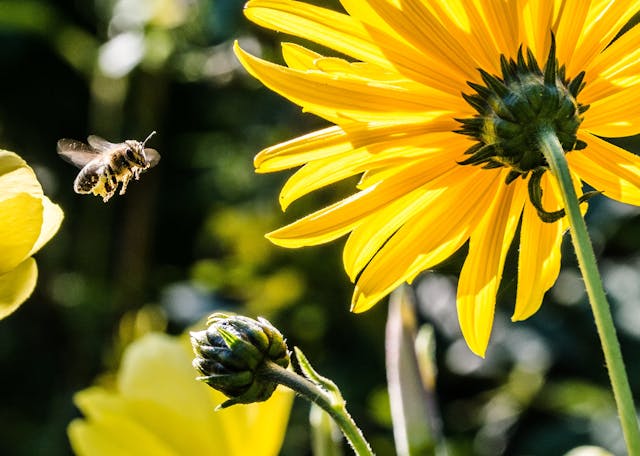
These plants are found in various parts of the world, each with its unique climate and soil conditions. Lavender thrives in the sunny Mediterranean regions, where it has been cultivated for centuries. Echinacea is native to the prairies and open woodlands of North America, a testament to the continent’s rich natural heritage. Milkweed, also native to North America, can be found in fields, meadows, and along roadsides, a resilient survivor in a changing landscape.
The history of these plants is a story of human and ecological interdependence. They have been used for medicinal, culinary, and ornamental purposes, each use reflecting a different aspect of their multifaceted nature. Lavender’s calming properties have made it a staple in aromatherapy and natural medicine. Echinacea’s immune-boosting qualities have been recognized for centuries, making it a valuable addition to natural health practices. Milkweed’s role in the life cycle of the monarch butterfly highlights its ecological importance, serving as a reminder of the delicate balance that sustains life on our planet.
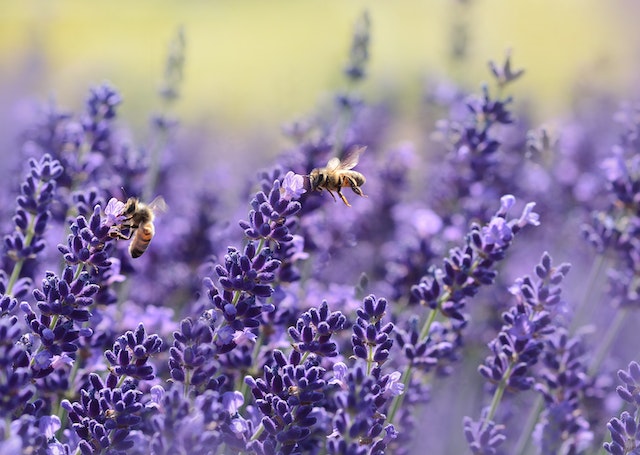
In promoting pollinator-friendly plants, we are not only supporting the health of our ecosystems but also enhancing our own well-being. These plants offer a sensory feast, a source of inspiration, and a connection to the natural world that is both grounding and uplifting. They remind us of the beauty and resilience of nature, encouraging us to slow down, to observe, and to appreciate the intricate web of life that surrounds us.
In a world where the pace of life is often hectic and stressful, pollinator-friendly plants offer a refuge. They provide a space where we can reconnect with nature, find solace in its beauty, and draw inspiration from its resilience. The act of tending to these plants, of creating a garden that buzzes with life, is an act of hope and renewal. It is a reminder that even in small ways, we can make a positive impact on the world around us.

So, whether you are an avid gardener or simply someone who appreciates the beauty of nature, consider incorporating pollinator-friendly plants into your life. Let the soothing scent of lavender calm your mind, the vibrant colors of echinacea lift your spirits, and the delicate beauty of milkweed remind you of the wonders of the natural world. In doing so, you will be supporting the pollinators that are essential to our ecosystems, enhancing your own well-being, and finding a source of inspiration that can enrich your life in countless ways.
In the grand tapestry of nature, these plants are the threads that connect us to the pollinators, to the earth, and to each other. They are a testament to the beauty and resilience of life, a source of inspiration, and a reminder of the profound connection we share with the natural world. Embrace them, nurture them, and let them be a part of your journey towards a more balanced, harmonious life.

